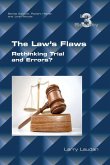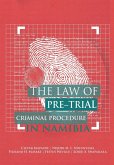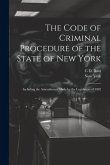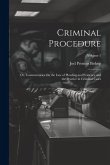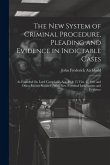A cognitive analysis of judicial sentencing in multiple-offence cases, with important policy implications.
Austin Lovegrove examines the sentencing of offenders appearing on multiple offences and how judges, having fixed a prison sentence for each offence, determine an overall sentence for each offender. Analysing judges' verbal protocols for sentencing problems and sentences for fictitious cases, he is able to offer, first, a model of judicial sentencing in the form of a decision strategy comprising working rules deduced from the given responses of judges as they attempted to apply sentencing law, and, second, a numerical guideline in the form of an algebraic model quantifying the application of the working rules. On the basis of this empirical data, Dr Lovegrove furthers understanding of the nature and place of intuition in sentencing and of how the cumulation of sentence can be integrated into a system of proportionality related to the seriousness of single offences.
Review quote:
"...the book is valuable...."
R. Barry Ruback, International Criminal Justice Review
Table of contents:
List of figures; List of tables; Acknowledgments; 1. Judicial decision making and sentencing policy: continuation of a study; 2. A sentencing decision model: single and multiple similar counts; 3. A sentencing decision model: multiple disparate counts; 4. Testing the decision model for multiple disparate counts; 5. The techniques of data collection; 6. Judges' thoughts on sentencing the multiple offender; 7. An alternative sentencing decision model for the multiple offender; 8. Validity and development of the alternative decision model: the data collection; 9. Towards a requisite decision model for sentencing the multiple offender; 10. The armature of judicial sentencing; Appendix: Case 37 from Sentencing Research Exercise - Part 3B; References; Index.
Hinweis: Dieser Artikel kann nur an eine deutsche Lieferadresse ausgeliefert werden.
Austin Lovegrove examines the sentencing of offenders appearing on multiple offences and how judges, having fixed a prison sentence for each offence, determine an overall sentence for each offender. Analysing judges' verbal protocols for sentencing problems and sentences for fictitious cases, he is able to offer, first, a model of judicial sentencing in the form of a decision strategy comprising working rules deduced from the given responses of judges as they attempted to apply sentencing law, and, second, a numerical guideline in the form of an algebraic model quantifying the application of the working rules. On the basis of this empirical data, Dr Lovegrove furthers understanding of the nature and place of intuition in sentencing and of how the cumulation of sentence can be integrated into a system of proportionality related to the seriousness of single offences.
Review quote:
"...the book is valuable...."
R. Barry Ruback, International Criminal Justice Review
Table of contents:
List of figures; List of tables; Acknowledgments; 1. Judicial decision making and sentencing policy: continuation of a study; 2. A sentencing decision model: single and multiple similar counts; 3. A sentencing decision model: multiple disparate counts; 4. Testing the decision model for multiple disparate counts; 5. The techniques of data collection; 6. Judges' thoughts on sentencing the multiple offender; 7. An alternative sentencing decision model for the multiple offender; 8. Validity and development of the alternative decision model: the data collection; 9. Towards a requisite decision model for sentencing the multiple offender; 10. The armature of judicial sentencing; Appendix: Case 37 from Sentencing Research Exercise - Part 3B; References; Index.
Hinweis: Dieser Artikel kann nur an eine deutsche Lieferadresse ausgeliefert werden.


